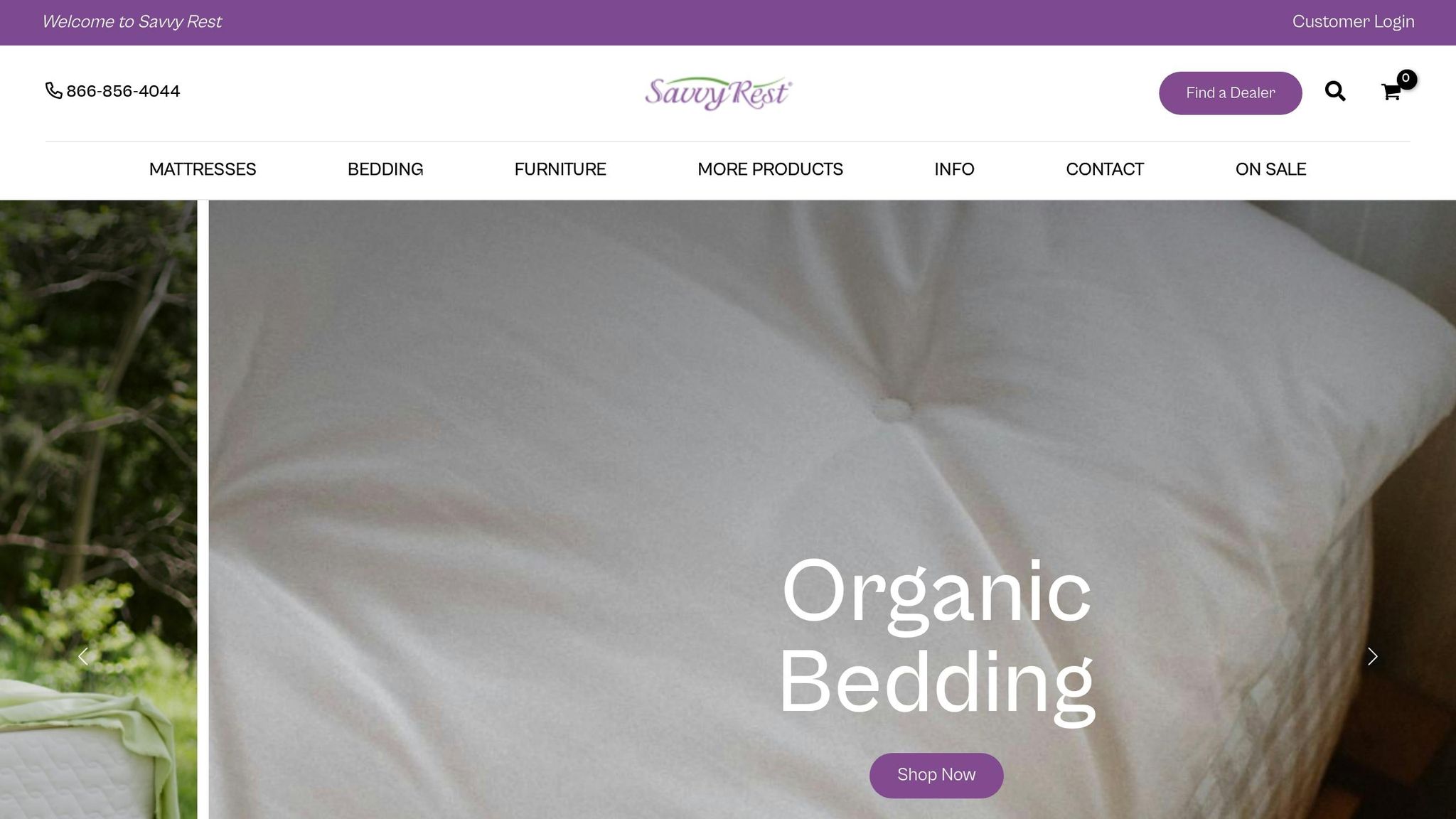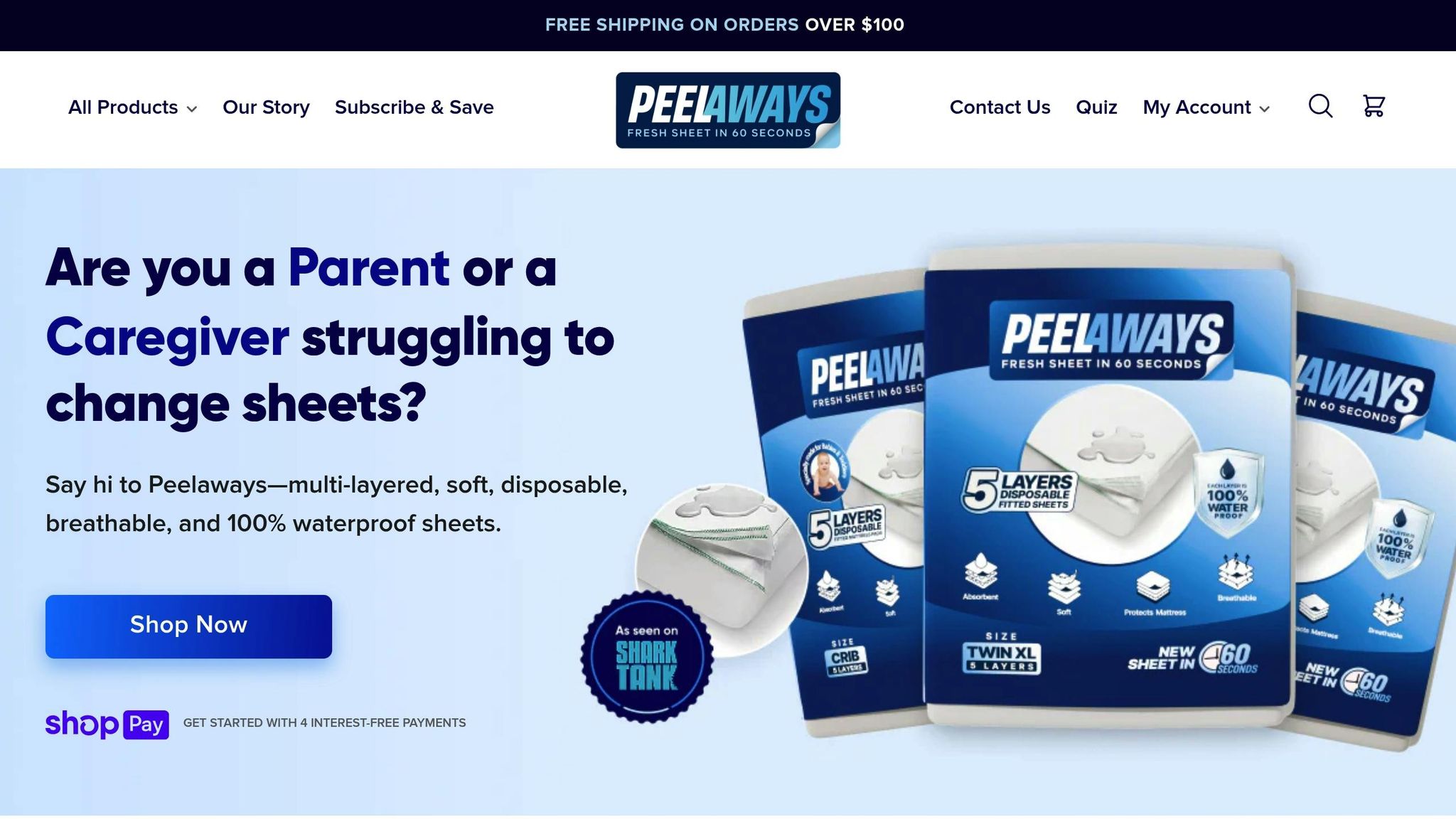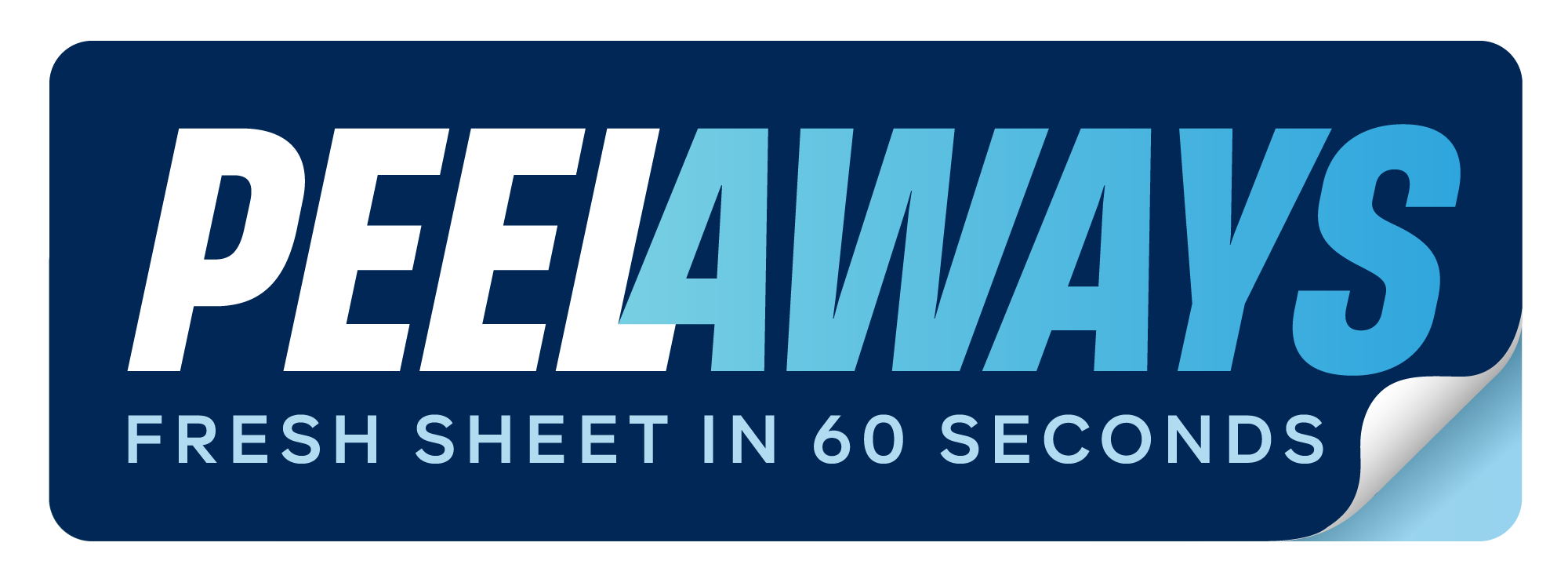Why Organic Waterproof Bedding Matters for Incontinence Care

Caring for incontinence can be tough, but choosing the right bedding makes a big difference. Organic waterproof bedding offers a safer, more comfortable, and eco-friendly alternative to standard options. Here’s why it matters:
- Healthier Materials: Organic bedding avoids harsh chemicals like PVC and phthalates, reducing skin irritation and promoting airflow to keep skin dry.
- Eco-Conscious Choice: Made with biodegradable and recyclable materials, it minimizes waste and supports sustainable farming practices.
- Better Comfort: Unlike noisy, heat-trapping plastic-based bedding, organic options are soft, breathable, and quiet for a more restful sleep.
- Practical Design: Some products, like PeelAways, simplify care with multi-layer, disposable sheets that save time and reduce laundry.
Switching to organic waterproof bedding improves comfort, hygiene, and care routines while being kinder to the planet. It’s a smart, long-term solution for families and caregivers managing incontinence.
Organic Waterproof Mattress Protector | Savvy Rest #bedding #mattressprotector #pottytraining

Problems with Standard Waterproof Bedding
While standard waterproof bedding might seem like a practical choice for managing incontinence, it often falls short in ways that can negatively impact comfort, health, and the environment. Many of these products focus solely on providing basic waterproofing, ignoring the broader needs of users and caregivers. Let’s take a closer look at some of the key issues.
Chemical Exposure and Skin Health
Most standard waterproof bedding is made from materials like vinyl, PVC, or other plastic-based fabrics. These often contain chemicals such as phthalates, which can irritate the skin, especially for those with sensitivities. On top of that, these materials lack breathability, trapping heat and moisture against the skin. This creates a perfect environment for bacterial and fungal growth.
People managing incontinence are already at a higher risk of skin-related issues like rashes, irritation, and even pressure sores due to prolonged exposure to moisture. When bedding materials prevent proper airflow, these problems can worsen. In some cases, direct contact with such materials can cause allergic reactions or conditions like contact dermatitis, making standard bedding unsuitable for those needing a gentler, skin-friendly option.
Environmental Concerns with Non-Biodegradable Materials
The environmental impact of standard waterproof bedding is another major drawback. These products are typically made from non-biodegradable materials that sit in landfills for decades, contributing to long-term pollution. Once discarded, they add to waste streams that can harm ecosystems and wildlife.
The production process is another concern. Manufacturing these materials often involves significant carbon emissions and the release of harmful chemicals, which can degrade air and water quality. For families who value sustainability, the environmental footprint of standard waterproof bedding makes it a less appealing choice.
Comfort and Practical Challenges
Comfort is another area where standard waterproof bedding often fails. Plastic-based materials trap heat, making the sleeping experience uncomfortably warm. They can also produce crinkling noises with movement, disrupting sleep for both the user and their caregivers.
Practical issues arise as well. Cleaning and maintaining these materials can be a hassle, often requiring harsh cleaning agents to sanitize them properly. When wet, the smooth surfaces can become slippery, creating safety risks during transfers or repositioning. Over time, these materials are prone to cracking or tearing, which not only reduces their waterproof effectiveness but also means they need to be replaced more frequently.
Finally, the rigid nature of many standard waterproof materials makes them less adaptable to the body’s contours. Unlike softer fabrics, they can create pressure points, leading to discomfort during extended periods of rest. These shortcomings highlight the need for better solutions that balance effectiveness with user comfort and environmental responsibility.
How Organic Waterproof Bedding Solves These Problems
Organic waterproof bedding offers a smart solution for managing incontinence care, blending natural materials with advanced waterproofing technology. It provides reliable protection while prioritizing health, comfort, and environmental care.
Health Benefits of Organic Materials
Organic waterproof bedding is crafted from natural fibers, like organic cotton, and avoids synthetic dyes, bleaches, and chemical finishes. Its tightly woven structure - with pores smaller than 10 microns - acts as a barrier against allergens and irritants. At the same time, it promotes airflow, helping reduce skin irritation and improve sleep for those with sensitivities or incontinence[1][2].
Environmental Responsibility
By using materials grown without harmful pesticides or fertilizers, organic waterproof bedding supports eco-friendly farming practices and reduces environmental harm. Many products feature TPU (thermoplastic polyurethane) backing instead of PVC, which is more energy-efficient to produce and decomposes more safely. Some options also incorporate biodegradable or recyclable waterproof layers, cutting down on landfill waste and extending the bedding's lifespan[1]. This combination of sustainability and comfort makes organic bedding a responsible choice.
Waterproof Protection Meets Comfort
These products combine thin, flexible waterproof layers with soft, breathable organic cotton, blocking liquids while allowing heat and moisture to escape. This ensures a temperature-regulated, comfortable sleep environment[1][2]. Unlike traditional waterproof bedding, which can feel stiff or noisy, organic options remain soft and quiet, further enhancing sleep quality.
Some designs even include natural latex, adding antimicrobial properties without compromising the organic nature of the bedding[3].
As more people seek sustainable and non-toxic options, manufacturers have developed modern organic waterproof bedding that balances convenience and protection. Many of these products are machine washable, making them practical for everyday use[1][2].
For even greater convenience, products like PeelAways offer a unique alternative. PeelAways features disposable, waterproof bed sheets with a patented multi-layer design. Caregivers can simply peel away a soiled layer for a fresh one, eliminating the need for immediate washing. This innovative approach maintains hygiene, saves time, and aligns with both comfort and environmental considerations.
sbb-itb-45288fe
How to Choose Quality Organic Waterproof Bedding
Finding the right organic waterproof bedding for incontinence care involves balancing effective liquid protection with materials that are gentle on the skin and free from harmful chemicals - all while considering environmentally conscious options.
Key Features to Consider
When shopping for organic waterproof bedding, prioritize these features:
- Certified organic, chemical-free fabrics: These ensure a soft touch against the skin and help reduce irritation.
- Breathable waterproof barriers: Opt for materials that block liquids but avoid the heavy, plastic-like feel of traditional options. Good airflow is essential for comfort.
- Reliable moisture containment: Whether you prefer disposable or reusable bedding, make sure the layers are designed to effectively hold moisture throughout use.
- Hypoallergenic and non-toxic materials: For sensitive skin, these options are ideal for minimizing irritation and promoting comfort.
These features not only enhance comfort but also make daily care routines more manageable, simplifying cleanup and maintenance.
Simplified Cleaning and Hygiene
Maintaining hygiene is crucial, especially for bedding used in incontinence care. Traditional bedding often requires lengthy cleaning processes and increases the risk of cross-contamination. Modern designs, however, focus on ease of cleaning, helping caregivers save time and reduce exposure to contaminants.
PeelAways: A Convenient Multi-Layer Solution

PeelAways is a great example of bedding that checks all the boxes. Its patented multi-layer peel-away design makes it easy to manage incontinence care. Each sheet includes 5 to 7 soft, absorbent layers, available in various sizes:
- Crib-A-Peel (5 layers): $30.99
- King (5 layers): $53.99
- Twin XL (7 layers): $41.99
- Cot (7 layers): $34.99
With PeelAways, caregivers can simply peel away the soiled top layer to reveal a clean sheet underneath - no need for lifting heavy mattresses or immediate laundering. This one-step process saves time and reduces the risk of cross-contamination.
In line with organic bedding principles, PeelAways offers compostable and biodegradable options. For families managing long-term incontinence care, they also provide a 15% discount on subscription plans, free shipping on orders over $100, and a 30-day money-back guarantee. It’s a practical, eco-friendly, and cost-effective solution for incontinence care.
Conclusion: Better Comfort, Hygiene, and Environmental Care
Opting for organic waterproof bedding in incontinence care brings advantages for individuals, caregivers, and the planet. Those dealing with incontinence benefit from softer, breathable fabrics that reduce skin irritation, while caregivers avoid exposure to harsh chemicals. At the same time, the environment benefits from biodegradable materials that decompose naturally instead of lingering in landfills for years.
Beyond these practical perks, organic bedding offers a thoughtful and well-rounded approach to care. The move toward eco-friendly bedding isn’t just a passing trend - it’s a smart solution to real-life healthcare needs. Traditional waterproof options often force families to choose between effective protection and comfort. Innovations like PeelAways solve this dilemma by blending waterproof reliability with soft, chemical-free materials, prioritizing health and environmental care simultaneously. These advancements not only improve the quality of care but also make daily life easier for households.
For families managing ongoing incontinence care, organic waterproof bedding provides a cost-efficient option by cutting down on laundry needs and offering a longer product lifespan.
Perhaps the greatest benefit is the peace of mind that comes with dependable, eco-conscious care. Choosing bedding that supports skin health, minimizes environmental harm, and simplifies caregiving routines allows families to focus on what truly matters - offering compassionate and dignified care. Whether you’re caring for an elderly loved one, assisting a family member with special needs, or helping someone recover from a medical condition, organic waterproof bedding turns a difficult aspect of caregiving into a more manageable and sustainable experience.
Switching to organic waterproof bedding isn’t just about better materials - it’s about embracing a care approach that places equal importance on comfort, health, and environmental responsibility.
FAQs
What makes organic waterproof bedding better for your health?
Organic waterproof bedding provides a healthier option compared to conventional choices by steering clear of harsh chemicals, synthetic treatments, and toxins often used in standard bedding. Crafted from natural materials, it’s designed to be breathable, moisture-wicking, and gentle on the skin, making it an excellent choice for regulating body temperature while minimizing skin irritation, allergies, and respiratory concerns.
These qualities make it especially beneficial for people with sensitive skin or those dealing with incontinence. Plus, opting for organic bedding isn’t just about personal well-being - it’s also a step toward supporting a more sustainable and eco-conscious lifestyle.
Why is organic waterproof bedding a sustainable choice for incontinence care?
Organic waterproof bedding offers an eco-conscious solution, crafted from natural, non-toxic materials like organic cotton. Organic cotton stands out because it requires less water, avoids harmful pesticides, and helps maintain healthier ecosystems. This makes it a smarter choice for reducing environmental impact and conserving resources during production.
When made waterproof, these bedding options often rely on sustainable methods and natural treatments, ensuring they stay kind to the planet. Opting for organic waterproof bedding means you're helping to minimize chemical pollution, protect water systems, and support a greener, more sustainable future.
What should I consider when choosing organic waterproof bedding for incontinence care?
When selecting organic waterproof bedding for incontinence care, focus on options that combine hygiene, comfort, and durability. Choose bedding with a breathable waterproof layer crafted from safe, non-toxic materials. This barrier should effectively block leaks while still allowing airflow, helping to maintain a fresh and comfortable sleeping environment.
A soft, organic top layer, like cotton or bamboo, can add to the comfort by regulating temperature and providing a gentle surface for restful sleep. To ensure the bedding stays in place, look for designs with elasticized edges or similar features that keep it secure and prevent shifting during the night. These thoughtful details not only improve cleanliness and comfort but also make managing incontinence more practical for everyday use.
Related Blog Posts
Comments
0

SAVE MONEY & WATER
Professionals & Institutions save a fortune on labor/laundry.

SUPERIOR COMFORT
The first thing our customers notice is how soft our sheets are.

100% WATERPROOF
Each layer is 100% Waterproof, perfect for spills and accidents

SAVE TIME
Change the sheet in under 1 minute without stripping the bed.




Leave a comment